Gaps under your fence can be a nuisance; unwanted wildlife can find their way into your yard, or your pets can have an escape route. How can you fill these gaps, and the what causes them to form? We researched to provide the answers below.
There are several ways of filling gaps under your fence, but we have provided ideas that are the most effective:
- Hardware cloth
- Concrete stones
- Cedar pickets
- Horizontal wood boards
- Decorative stones or washed river rocks
There are so many ways on how to fill gaps under your fence. However, keep reading to learn some of the most effective ideas to seal these gaps to make your fence functional again. Besides, find out what causes these gaps and the cost of filling them up.
![County style long wooden cedar yellow fence - How To Fill Gap Under Fence [5 Effective Fillers]](https://fencefixation.com/wp-content/uploads/2022/05/County-style-long-wooden-cedar-yellow-fence-How-To-Fill-Gap-Under-Fence-5-Effective-Fillers-2-800x1200.png)
Ideas To Seal Gaps Under Your Fence
Fences are great because they provide privacy to our homes, keep away unwanted animals, and prevent pets from running away. If you have young children, their curiosity will not allow them to escape.
Due to various reasons, which we shall explore later in this post, gaps may form under your fence requiring immediate attention. The following are some ideas that you can put into good use to close these gaps:
1. Hardware Cloth
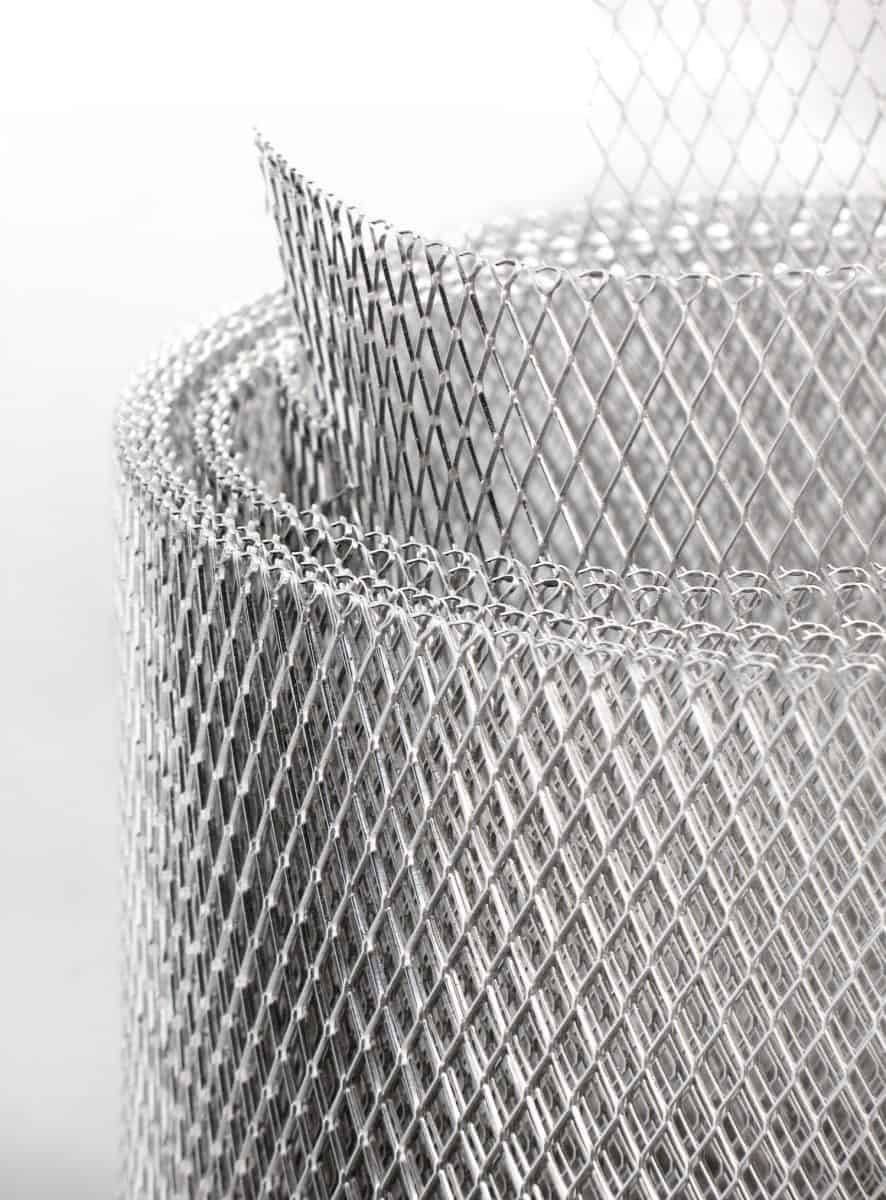
Hardware cloth, such as the one featured below, is incredibly effective at sealing gaps under wooden or chain-link fences. The steps below show you how to seal the gaps:
- Measure the length of your fence panel to know how much hardware cloth you should purchase.
- With a trenching shovel or weeder hoe, dig about 3 inches into the ground to create a trench along the gap.
- Place your hardware cloth inside the trench.
- With heavy-duty staples, secure the hardware cloth on the wooden fence.
- Fill back the trench with soil with a shovel and tamp it down to secure the hardware cloth firmly underground.
- If you have a chain-link fence, use UV-resistant cable ties to secure the hardware cloth to the fence.
Check out this product on Amazon.
2. Concrete Stones
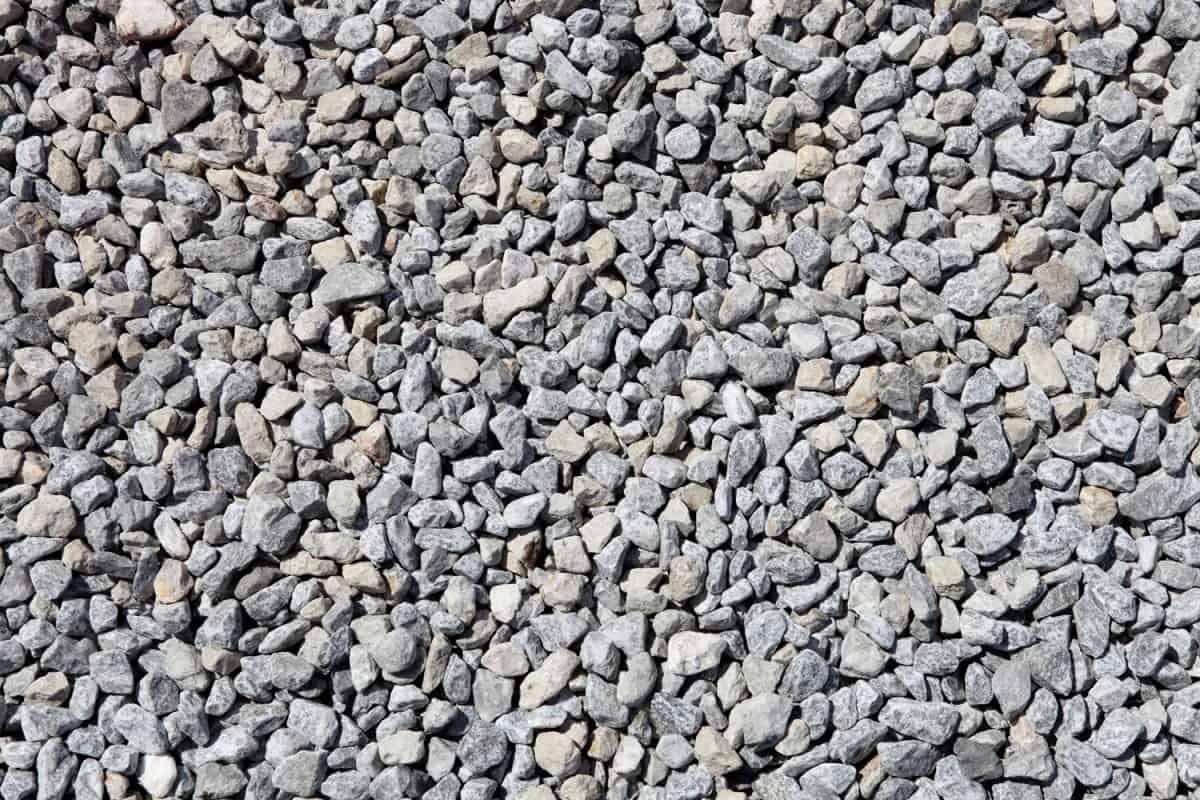
You can also use concrete stones to fill gaps under your chain-link, wooden, or any other type of fence. The steps to seal a gap using concrete stones include:
- With a shovel dig out the soil where the gap is from one fence post to another. Remove enough soil to level the ground to that of the gap. For example, if the gap is 10 inches deep, excavate more ground until it is 10 inches deep.
- Add some soil to level out the surface inside the dug-out area. Use a carpenter’s level for this.
- With the back of a hoe or a tamper, tamp down the soil in the dug-out area.
- Pour 1 inch of coarse sand into the dug-out area and level the sand.
- Lay down the first layer of concrete stones, one against another, from one post to the next, ensuring they are level.
- With a rubber mallet, tamp down each stone.
- Lay the second layer of concrete stones on top of the first one. Ensure to lay a stone across each seam, similar to how bricks are staggered in a wall.
- With a sledgehammer and brick-set chisel like the ones shown above, cut the stones to size to fit at each end of the second layer.
- If required, add another layer of concrete stones until you seal the gap completely.
- Finally, fill back the soil you had earlier removed around the stone wall.
Check out this product on Amazon.
3. Cedar Pickets
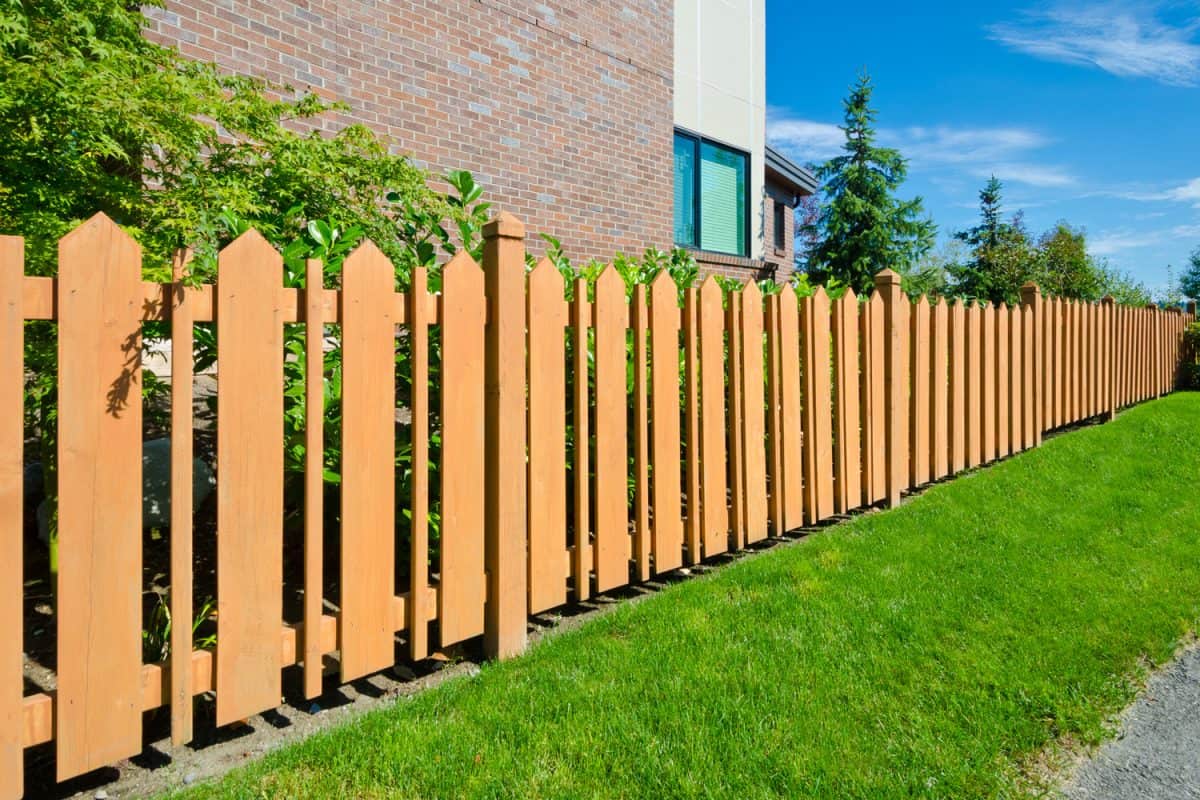
Cedar pickets are great for filling gaps under a wooden or chain-link fence because they resist termites. Below are the steps on how to install the cedar pickets in the gap under your fence:
- Take the length and height measurements of the gap.
- Depending on the size of the gap, use a circular saw to cut the first cedar fence picket. Let us take an example of a gap that is 5 inches deep. Cut out a cedar picket that is 5/8 inch x ½ inch x 5 inches.
- If the gap is bigger, you may cut another cedar picket and lay one on top of the other so that it is 10 inches high.
- Next, cut several 1" x 2" x 10" lumber pieces.
- Take your lumber pieces and vertically place them on the cedar picket, 8 to 10 inches apart. Drive 1 ½ inch screws into each lumber and join it to the cedar picket.
- Dig the gap slightly deeper and place your horizontal fence picket inside. Drive 1-inch wood screws through the cedar picket to join it to your wooden fence.
- If you have a chain-link fence, drill ¼ inch holes through the cedar pickets. Pass UV-resistant cable ties through the holes in the picket fence and the wires of the chain-link fence and tighten them to hold the pickets in place.
Check out this product on Amazon.
4. Horizontal Wood Boards
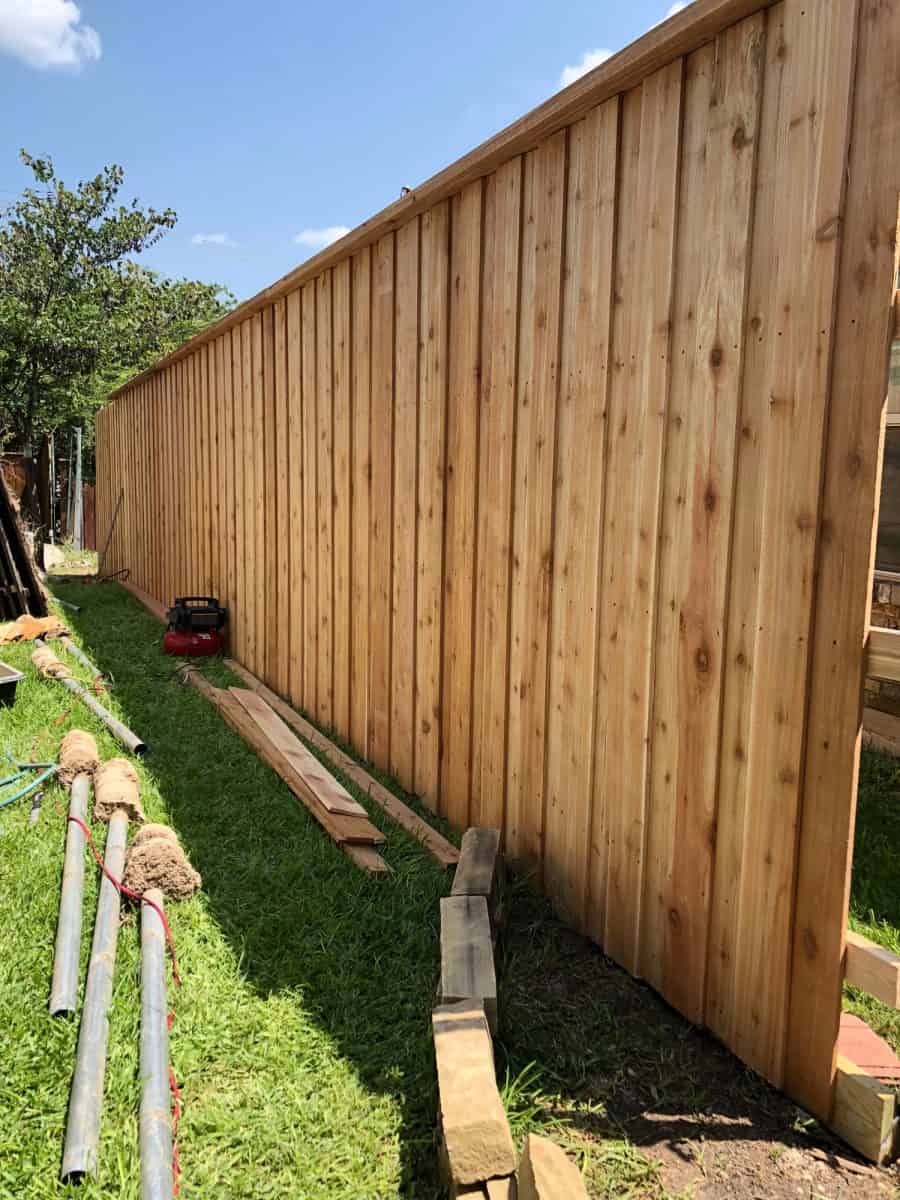
These are great for sealing gaps under the wood fences. Drill nails into the horizontal wood boards to connect them to the wooden fence. This covers the space beneath. With this method, you have the opportunity to use the same board as your fence for an aesthetic appeal.
5. Washed River Rocks Or Decorative Stones

This is most probably the easiest solution to filling gaps under the fence. You don’t have to dig, but instead, place them to cover the gap.
For this method, do the following:
- Collect the stones or rocks that have a diameter of more than 1 inch.
- Pile them on one side of the fence until the gap is covered.
- With a bow rake, spread them evenly to seal the gap.
- If you can’t find these types of stones, you can use wall stones.
What Causes Gaps Under Fence?
There are a few reasons why gaps form underneath your fence including:
Fence On An Incline
If your fence is built on an incline from one end to another, there may be gaps underneath. Even though the elevation is small, you may notice some dips along your fence.
Soil Shift
When soil shifts, gaps could form under your fence, which can later lead to your fence collapsing.
Soil shifts for several reasons. For example, if the soil has a lot of decayed organic matter on top, it will become loose, unstable, and shift. Also, if the soil is not compact enough, it can shift when you build upon it, creating a gap.
Dogs Digging Under Fence
Your dog can dig under your fence because it is bored and wants to play. This can happen if your dog is left alone for long periods.
Poorly Installed Fence
If your fence is not installed with the precision it requires, gaps could form under your fence. To avoid this, you could hire a trained fence professional.
How Much Does It Cost to Fill Gaps Under Fence?
The cost of repairing your fence or sealing the gap underneath depends on the type of damage and the type of fence. A DIY job can be cheaper, but hiring a fence expert can prevent future damage. Also, if you share the fence with a neighbor, you may agree to split the costs and save some money.
On average, filling the gap under your fence costs around $30 per foot, including labor. Chain-link fences are quite affordable and cost close to $18 per foot. On the other hand, repairing underneath brick or stone fences can be as high as $50 per foot.
In Closing
It can be annoying when wandering animals find their way into your yard because of a gap under your fence. Likewise, your pets may find their way outside of your home. But, you can do something about it by thinking of the best idea that closes the gap.
There are various reasons why gaps form, but the answer is to provide the most appropriate solution depending on the type of fence you have. A gap under a wooden fence may need a different method of filling it up in contrast to a chain-link fence.
The cost of filling or sealing the gaps depends on the extent of damage under your fence, the materials used, and the cost of labor. If you fix the problem yourself, it may be cheaper. However, if you doubt your skills, you are better off hiring a fence expert who will do a job that will last long.
Would you like to know the best wood and the standard height for a picket fence? Then you may read our previous posts by clicking on the links below:




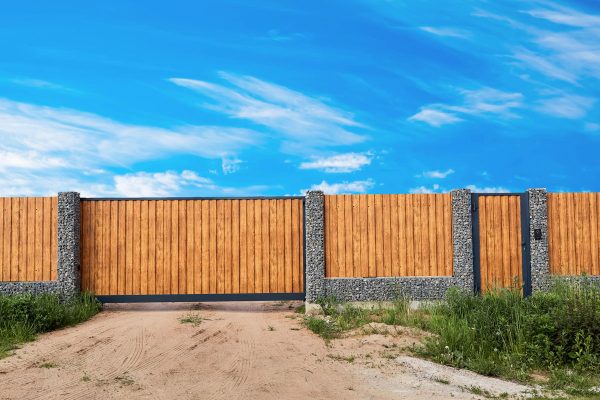
![Close board fence erected around a garden for privacy with wooden fencing panels, concrete posts and kickboards for added durability, Are Gravel Boards Treated? [And How Long Do They Last]](https://fencefixation.com/wp-content/uploads/2022/06/Close-board-fence-erected-around-a-garden-for-privacy-with-wooden-fencing-panels-concrete-posts-and-kickboards-for-added-durability-600x400.jpg)
![Wooden fence with green lawn and trees, Stepped Vs. Racked Fence Installation [Where & How To Use Each]](https://fencefixation.com/wp-content/uploads/2022/06/Wooden-fence-with-green-lawn-and-trees-600x400.jpg)